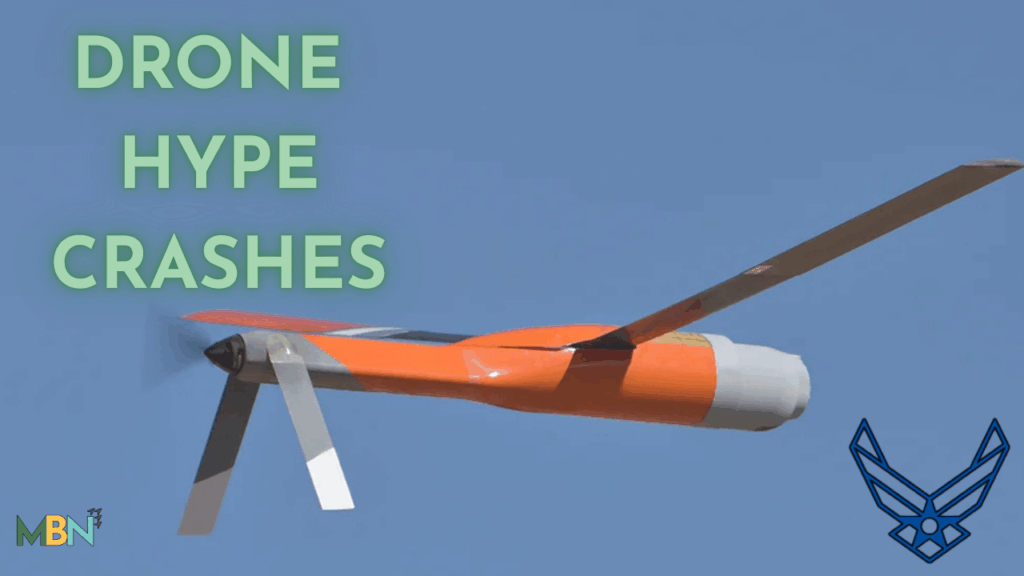
Anduril’s Altius and Ghost drones suffered multiple crashes during testing at Eglin Air Force Base and other military exercises, contradicting the company’s public claims of reliability and battlefield success.
Military personnel, former employees, and Ukrainian operators report ongoing technical issues — including susceptibility to jamming and mechanical malfunctions — despite the company’s rapid growth and soaring valuation.
The failures highlight broader challenges facing U.S. defense manufacturers as modern warfare shifts toward cheap, expendable drones and rapid development cycles.
Two military drones built by Anduril Industries — the defense-tech startup backed by Silicon Valley billions — crashed during Air Force testing at Eglin Air Force Base this month, highlighting persistent gaps between the company’s public confidence and its real-world performance.
According to sources familiar with the tests, one of the company’s Altius drones plunged roughly 8,000 feet straight into the ground after being launched from an aircraft. A second Altius spiraled down in a separate test shortly afterward. Air Force Special Operations Command confirmed the testing occurred but declined to release details.
The mishaps come at a time when Anduril’s valuation has soared to $30.5 billion, tripling since late 2022 as drones reshape modern warfare and the Pentagon seeks faster, cheaper options for the battlefield.
Anduril founder Palmer Luckey — who has styled the company as a disruptive alternative to traditional defense contractors — told audiences this spring that the Altius platform had destroyed “hundreds of millions of dollars worth of Russian targets” in Ukraine. By August, he was personally delivering the first batch to Taiwan.
But interviews with more than a dozen former employees, military officials, and Ukrainian operators paint a more complicated picture. While the Altius has been advertised as “battle-ready” across air, land, and sea platforms, sources say the system has struggled in both testing and active operations.
The company’s smaller Ghost drone also ran into serious trouble early in the Ukraine conflict. Ukrainian forces received about 40 units in 2022, only to quickly run into problems with Russian electronic warfare systems that jammed signals and disrupted flight operations. Four individuals familiar with the issue said Anduril underestimated how terrain and satellite interference would affect the aircraft.
Anduril acknowledged the challenges but said all manufacturers faced similar interference in the war’s first months. The company released an upgraded Ghost X in late 2023 to fix earlier failures.
Even the updated model stumbled this year. During a U.S. Army exercise in Germany, a video captured the Ghost X spinning out of control before slamming into the ground near soldiers — a clip that later went viral on the US ArmyWTF social media account.
Anduril blamed a rotor malfunction that has since been repaired. Army officials involved in the exercise reported the drone performed well overall, but still needs improvements in power management during extreme cold.
Despite the failures, the Pentagon the same day announced a contract worth up to $50 million for continued Altius testing and training support.
Anduril says the crashes and other problems are part of its model of aggressively testing systems at the edge of their performance limits. The company disclosed in a blog post that failures across Altius, Ghost, and its Lattice control software were expected and essential to improving the technology.
The Altius family has logged more than 2,000 flight hours, though the company did not release success-rate data.
The issues underscore a broader shift underway in American weapons manufacturing. After decades of prioritizing expensive, highly sophisticated systems — fighter jets, submarines, missile platforms — the U.S. is now confronting a battlefield defined by inexpensive, expendable drones that can be churned out quickly.
Anduril is positioning itself at the center of that transformation. Beyond drones, it is developing an autonomous warship with Hyundai and building the Fury, a large unmanned aircraft designed to fly alongside piloted fighters.
Luckey has hinted at pulling back the curtain on the messy development process. Days after asking followers on X whether the company should share more behind-the-scenes content, Anduril posted a video of Omen — its new hovering surveillance drone — crash-landing, labeling the post “developmental learnings.”
For now, neither the Air Force nor the Armed Forces of Ukraine is sharing how well the company’s systems perform after leaving the test range.
“Anduril Faces Repeated Military Drone Crashes During Tests,” Technology.org — full piece here: https://www.technology.org/2025/11/28/anduril-faces-repeated-military-drone-crashes-during-tests/ Technology.org.
Additional corroborating reporting by Reuters: “U.S. defense firm Anduril faces setbacks from drone crashes.” Reuters+2AOL+2
Register or login with Mid Bay News and never get another pop up on our site!